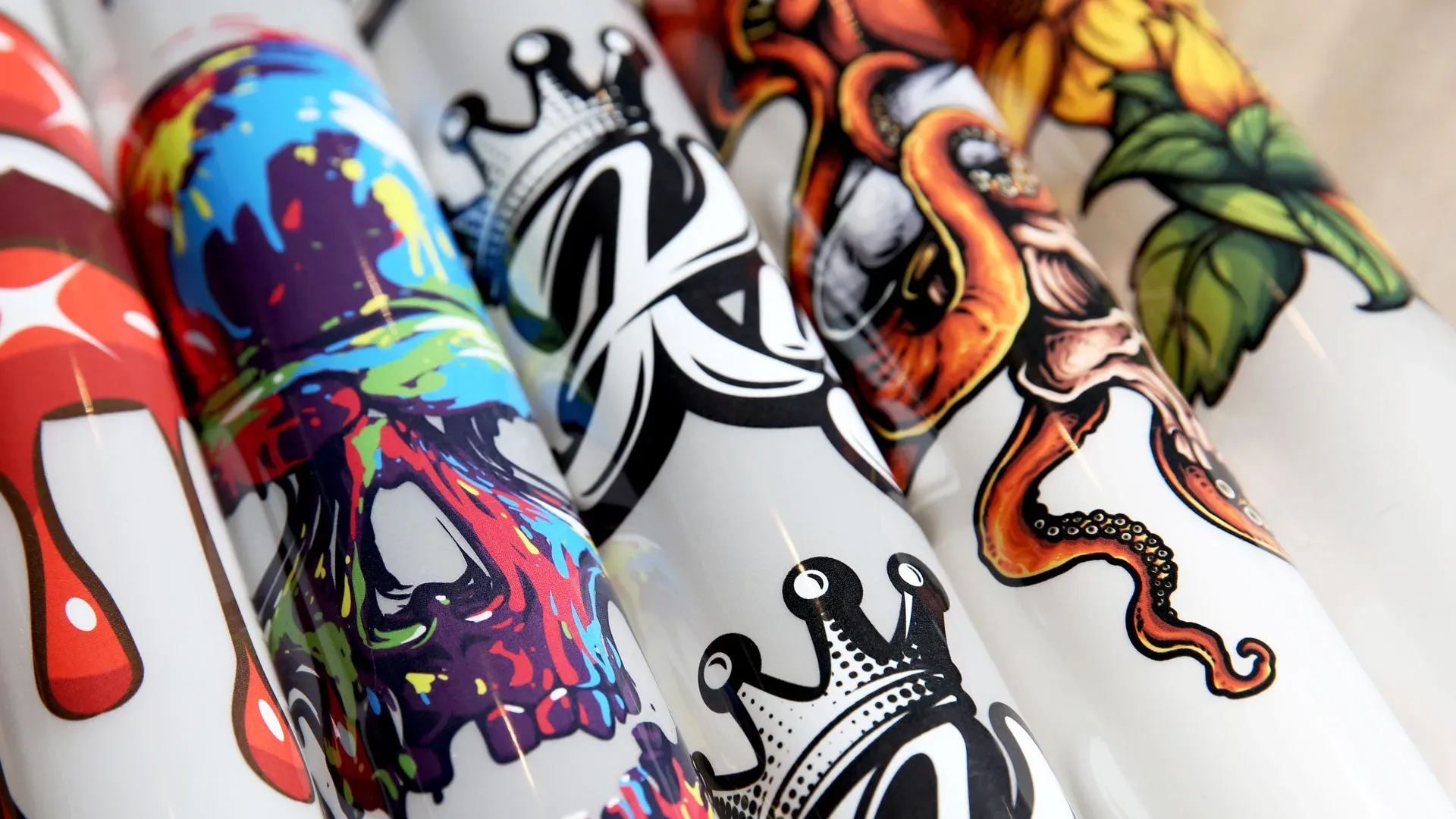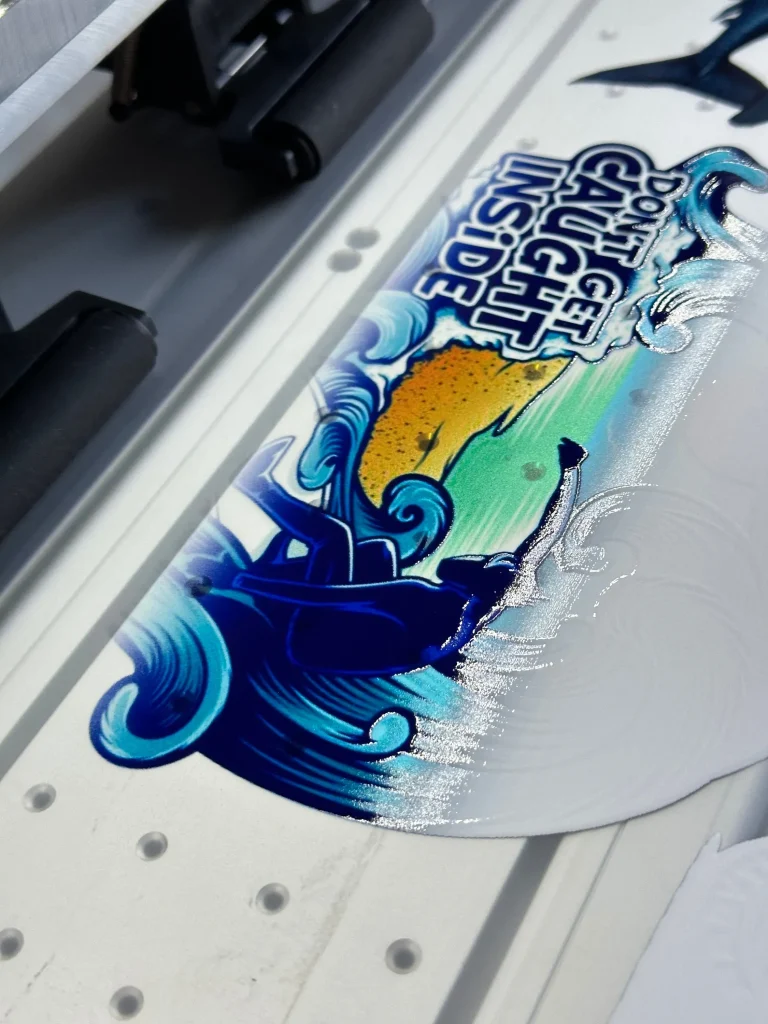DTF Transfers: From Concept to Creation in Garment Decoration
DTF transfers, or direct to film transfers, are redefining the landscape of custom t-shirt printing and garment decoration. This cutting-edge printing technology allows vibrant designs to be meticulously printed onto a unique transfer film, making it easy to apply stunning graphics onto various types of fabric. The growing popularity of DTF transfers can be attributed to their impressive versatility, durability, and user-friendly application process, appealing to both amateur crafters and professional print shops alike. By shifting from traditional methods to DTF printing, businesses can create high-quality, detailed designs that stand out and withstand the test of time, even after numerous washes. In this article, we will explore the key aspects of DTF transfers, including their technological advancements, artistic possibilities, and economic implications in today’s market.
Direct-to-film printing, often referred to as DTF printing, is a modern technique that has captured the attention of the textile industry, particularly in the realm of custom garment decoration. This method encompasses the process of printing intricate designs onto a specialized transfer medium, which can then be heat-applied to fabric surfaces, resulting in vibrant, high-resolution images. With the advancements in printing technologies, the adaptability of DTF solutions cater to various fabric types, expanding its application horizon. As entrepreneurs and artists increasingly explore these novel approaches to garment design, the potential of custom t-shirt printing through DTF emerges as a creative and economically viable option for many. In the following sections, we will delve deeper into the functionalities, benefits, and innovative developments surrounding direct to film transfers.
Understanding DTF Transfers: An Overview
Direct to Film (DTF) transfers represent a cutting-edge advancement in garment decoration, evolving from traditional printing methods. This innovative process allows designers to print their vivid and intricate designs onto a specialized transfer film. Once the design is prepared, it’s then heat-applied onto various fabrics, resulting in striking results. The process not only showcases exceptional detail but also opens a gateway to express creativity in personalized and unique garments.
Moreover, DTF technology serves multiple industries beyond custom t-shirt printing, including fashion, sportswear, and promotional items. As this technique gains attention, businesses and independent makers are discovering that DTF transfers facilitate quick production times, enabling them to keep pace in a rapidly evolving market. With the ability to adapt to multiple materials, DTF continues to redefine what is possible in garment decoration.
The Advantages of DTF Printing Over Traditional Methods
DTF printing comes with a myriad of advantages, positioning itself as a favorable choice compared to more conventional printing techniques like screen printing or sublimation. Firstly, one of its primary benefits is versatility; DTF transfers can adhere to a wide range of fabrics, including cotton, polyester, and blends, making it an attractive option for custom t-shirt printing. This flexibility means that designers can easily pivot or adjust designs for different garment types without compromising quality.
Additionally, the durability of DTF prints is immensely appealing. Unlike other processes that may lead to fading, cracking, or peeling after numerous washes, DTF transfers maintain their vibrant colors and sharp details. This longevity ensures customer satisfaction and reduces the need for recurrent orders, making it a cost-effective solution for businesses aiming to provide high-quality products to their clientele.
Recent Innovations in DTF Technology
Recent developments in DTF technology have paved the way for enhanced printing experiences. Brands like Epson and Mimaki have made significant strides by introducing advanced DTF printers equipped with improved interfaces and exceptional color reproduction capabilities. These innovations not only streamline the printing process but also ensure that users achieve stunning results that were previously challenging to attain.
Moreover, improved formulations of DTF inks and adhesives have emerged, enriching the quality and performance of final products. These enhancements ensure that printed designs reflect true colors and withstand the test of time, meeting the demands of both consumers and retailers who seek quality in their offerings. As technology advances, DTF printing is becoming increasingly accessible, inviting new creators into the fold.
Exploring the Creative Potential of DTF Transfers
The artistic possibilities with DTF transfers are virtually limitless, igniting a new wave of creativity among artists and hobbyists alike. With the technology’s ability to transfer complex and colorful designs, creators can experiment with various themes, styles, and patterns, exploring the boundaries of garment decoration. Custom t-shirts, hoodies, bags, and other fabric products can all become canvases for unique artworks, providing a platform for personal expression.
Furthermore, the rise of DIY crafting culture has facilitated the sharing of DTF techniques and designs among crafters, encouraging an exchange of inspiration. Online platforms brim with tutorials, guiding individuals through the steps of DTF printing, thus making it accessible to everyone—from professional designers to casual creators. This collective creativity is transforming the fashion landscape, showcasing the transformative power of DTF printing.
The Economic Implications of DTF Technology
The accessibility of DTF printing technology has significant economic implications, particularly for small businesses and independent creators in the textile and fashion industries. By lowering the barriers to entry, more entrepreneurs can venture into custom garment printing without substantial financial investments. This democratization of technology fosters innovation, empowering individuals to carve out niches in a crowded market with personalized offerings tailored to customer preferences.
As demand for DTF transfers increases, there is a concurrent growth in the market for associated products and services. This trend not only benefits printers and apparel makers but also stimulates the economy at large, as businesses expand and cater to emerging consumer needs. The evolution of DTF technology continues to create new avenues for economic growth, encouraging a vibrant marketplace filled with diverse creative options.
Looking Ahead: The Future of DTF Printing
The future of DTF printing is bright, promising exciting advancements that will further enhance its popularity. As technology evolves, we can expect ongoing improvements in printer capabilities, inks, and transfer processes, which will elevate the quality and efficiency of DTF transfers. The increasing demand for custom printed garments and personalized apparel is likely to drive innovation, making it an essential tool for businesses aiming to stand out in competitive markets.
Additionally, as more artists and designers embrace the affordances of DTF printing, there will be a surge of unique designs and concepts flooding the market. This creative expansion encourages diversity in garment decoration, fostering a culture where originality thrives. With continuous exploration of new printing techniques and potential applications, DTF printing will remain at the forefront of the textile decoration industry for years to come.
Frequently Asked Questions
What are DTF transfers and how do they work?
DTF transfers, or Direct to Film transfers, are a cutting-edge printing technique that allows for vibrant designs to be transferred onto fabrics. The process involves printing on a special film, applying adhesive powder, and using heat to bond the design to the garment, offering durability and versatility for custom t-shirt printing and garment decoration.
What advantages do DTF printing methods have over traditional garment printing techniques?
DTF printing boasts several advantages over traditional methods such as screen printing. It offers greater versatility across various fabric types, increased durability against wear and tear, and cost-effectiveness for custom t-shirt printing, making it an ideal choice for businesses and crafters.
Can DTF transfers be used on all types of fabrics?
Yes, DTF transfers are highly versatile and can be applied to a wide variety of fabrics, including cotton, polyester, and blends. This makes DTF printing a preferred technique for custom t-shirt printing and diverse garment decoration needs.
What recent advancements have been made in DTF printing technology?
Recent advancements in DTF printing technology include the introduction of high-performance printers with improved color reproduction and user-friendly interfaces. Brands like Epson and Mimaki are at the forefront of these developments, enhancing the quality and accessibility of DTF transfers for creators and businesses.
How does DTF printing compare to Direct to Garment (DTG) printing?
Unlike DTG printing, which applies ink directly to the garment, DTF printing uses a transfer film, allowing for better detail and durability. DTF transfers are typically more cost-effective for small batches and versatile across different fabrics, making them suitable for custom t-shirt printing.
What is the potential economic impact of DTF transfers on small businesses?
DTF transfers have democratized the custom garment printing market, enabling small businesses and independent creators to produce high-quality products with lower start-up costs. This accessibility fosters innovation, allowing entrepreneurs to thrive while meeting the growing demand for unique and durable printed garments.
| Key Points | Details |
|---|---|
| What is DTF Printing? | DTF printing uses a specialized printer to create high-quality fabric prints by transferring designs from a film to textiles using heat and pressure. |
| Key Benefits of DTF Transfers | 1. **Versatility**: Compatible with various fabrics including cotton and polyester. 2. **Durability**: Resistant to cracking and fading after multiple washes. 3. **Cost-Effectiveness**: More economical for small batch productions compared to traditional methods. |
| Recent Developments | Advancements in printer models and inks have improved color reproduction and user access, making DTF technology more widespread. |
| The Artistic Side of DTF | DTF enables intricate and colorful designs, empowering artists and DIY enthusiasts to create a wide variety of personalized items. |
| Economic Impact | DTF’s accessibility allows small businesses and independent creators to thrive, leading to innovation in custom garment printing. |
Summary
DTF transfers are a revolutionary advancement in garment decoration that open up new avenues for creativity and personalization in the textile industry. This innovative printing process allows for vibrant designs to be easily transferred onto various fabrics, making it a popular choice for custom t-shirt printing and beyond. With its benefits such as versatility, durability, and cost-effectiveness, DTF transfers are increasingly embraced by artists and entrepreneurs alike. As the technology continues to evolve, the opportunities for DTF printing will only grow, solidifying its position as a favorite within the fabric decoration community.







